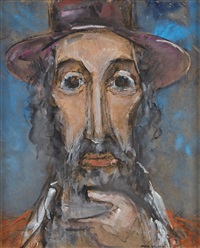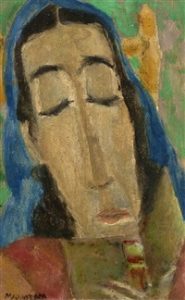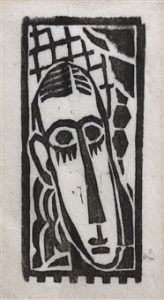18th April, ON THIS DAY
“Art has a higher purpose than mere imitation of nature. It transcends the earthly and measurable. It has its own scale and destiny. It is concerned with informing spirit that emanates only from spiritual and mystical realms, from the nether and the astral.”
– Max Weber
April 18th marks the birth anniversary of Max Weber, a Russian-born Jewish-American painter who brought Cubism to the United States. Henri Rousseau, Henri Matisse, and Paul Cézanne’s artwork had a significant influence on Weber’s abstract representations of interiors, landscapes, and portraits.

Courtesy: Artnet
Weber, who was born in 1881 to a poor Jewish tailor in Bialystok, Russia (now Poland), moved to Brooklyn, New York, with his family in 1891. Following his training under Arthur Wesley Dow at the Pratt Institute, Weber went on to work as an art teacher in Virginia and Minnesota’s public schools. His actual passion, though, was discovering Paris’s avant-garde communities, so he went there in 1905. He studied at conventional ateliers and became friends with Cubist luminaries like Apollinaire, Picasso, and Delaunay. During this time, Cézanne’s paintings and the non-Western art he viewed in anthropological collections had a significant influence on Weber’s work.

Courtesy: Artnet
A pivotal moment in Weber’s career occurred during his stay in Paris. He shared his intimate understanding of the Parisian Avant-Garde with the American Modernists huddling around Alfred Stieglitz after his return to New York in 1909. Weber held his first solo show at Stieglitz’s 291 galleries in 1911. His work was immediately displayed there. In 1913, the Newark Museum of Art hosted a significant exhibition of his work, and in 1917, the Society of Independent Artists held its inaugural exhibition, which included some of his pieces.
Weber experimented with a variety of artistic movements throughout his career, including Abstraction, Expressionism, and Fauvism. His initial paintings include powerful strokes and broken lines that straddle the figurative and abstract spectrum, showing the influence of numerous European artists. In Weber’s method, he painted with his “consciousness,” letting his instincts direct him. He published Cubist Poems (1913), Essays on Art (1916), and Primitives (1926) among his many other works on the subject.
Around 1920, Weber gave up Cubist Abstraction and switched to a more representational, Fauvist- and German Expressionism-influenced style of painting. He had a retrospective exhibition at the Galerie Bernheim-Jeune in Paris in 1924, and the Museum of Modern Art featured him in Paintings by Nineteen Living Americans in 1929. The museum also held a retrospective of him the following year. He primarily painted Old Testament images and Jewish life scenes in the 1930s, which were reminiscent of his Bialystok childhood.
Later works by Weber were characterised by a more Expressionistic aesthetic that was restricted to Jewish and Eastern European topics. His work became more contemplative and personal as he painted scenes from Jewish life and Old Testament subjects, exploring his own cultural roots.

Courtesy: Artnet
Weber had an unquestionable impact on the art world during his career. The Art Institute of Chicago, the Museum of Fine Arts in Boston, The Museum of Modern Art in New York, The National Gallery of Art in Washington, D.C., and The Whitney Museum of American Art are just a few of the important collections that house his works. His influence can also be seen in the works of numerous painters, such as Mark Rothko and Willem de Kooning, who he mentored and inspired.
The impact Weber has had on the art world is immense. Innovating artists have emerged as a result of his research of various artistic trends and concepts, as well as his singular method of painting with intuition and consciousness. A testament to the ability of art to bridge boundaries and unite people from different cultures and generations, Weber’s work continues to inspire artists today.





